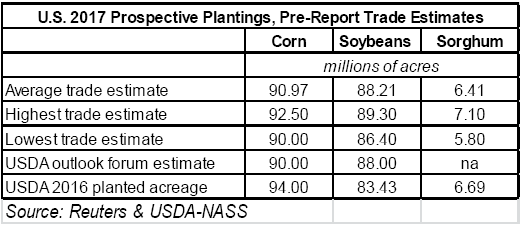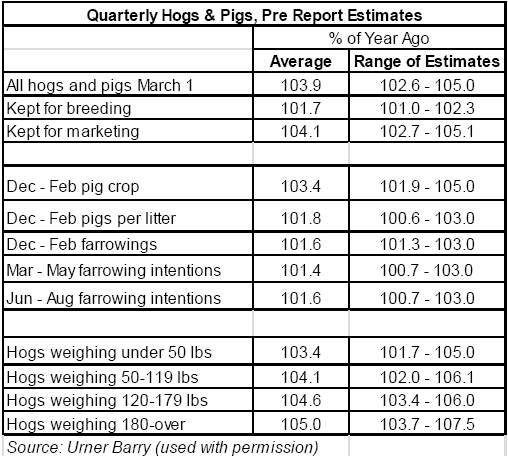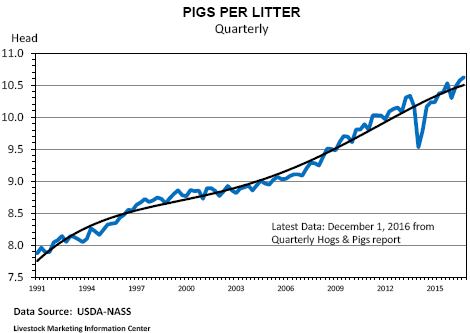



CME: 'Hogs and Pigs' Pre-report Estimates Range Wider Than Usual
US - USDA’s National Agricultural Statistics Service (NASS) will be releasing the much-anticipated Prospective Plantings report this Friday and also their survey on quarterly Grain Stocks, according to Steiner Consulting Group, DLR Division, Inc.Prior to those reports, on Thursday, NASS will release the Quarterly Hogs and Pigs report.
As is apparent in the summary table below, analysts have a notable range of expectations regarding the NASS Prospective Plantings report.

All analysts are expecting fewer acres of corn than last year, as did USDA at their annual Agricultural Outlook Forum back in February.
On average, analysts are expecting that corn farmers reported to NASS intentions to plant just under 91 million acres this year, down nearly 3 million acres from 2016’s.
For soybeans, the expectation is for plantings to increase 4.5 to 5.0 million acres year-over-year. US sorghum acreage may decline slightly compared to 2016’s, but analysts have a relatively wide range on that number.
Turning to the Quarterly Hogs and Pigs report, analysts expect that the survey of producers by NASS will show continued herd expansion.
Our assessment of the of the pre-report estimates is that the ranges are wider than typical. In terms of averages, the 1 March breeding herd is anticipated to be up 1.5 per cent to 2.0 per cent year-over-year.
Fully a 4 per cent increase compared to 2016’s is expected in animals kept for marketing. The range on the kept for marketing category is from up a modest 2.7 per cent to a very substantial 5.1 per cent jump.

All eyes will be on the kept for marketing number and its percentage change as of 1 March reported by producers to NASS.
Underlying that number is the pigs per litter during December through February. The wide range in market hog pre-report estimates is mostly due to assumptions about pigs per litter.
That range is from up only 0.1 per cent year-over-year to increasing 3.0 per cent. The average of the estimates is up 1.8 per cent.
The graphic shows the trend in pigs per litter through the last NASS report. The bounce-back is apparent from the devastation caused by PED virus a few years ago.

For those interested, the NASS data are the blue line and the trend line (black) is a fourth order polynomial.








